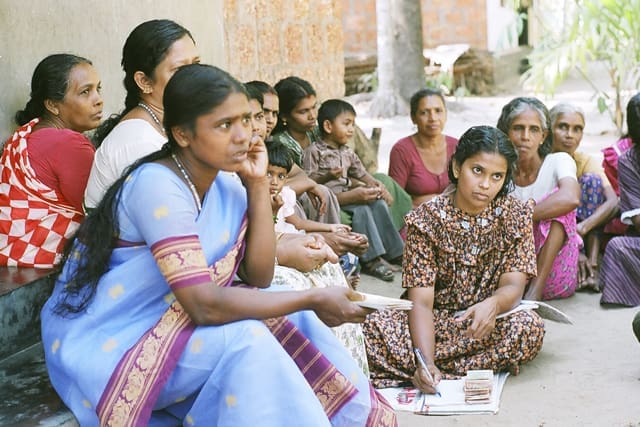A version of this post originally appeared on 100 Resilient Cities.

Building urban resilience is most effective when women have integral roles in the process, but too often they are excluded from decision-making completely. This is particularly problematic because women in lower income cities and marginal areas are disproportionately affected by everyday stresses—things like inefficient transportation systems and a weak formal economy. Yet they often have no role in the design and management of the municipal services that address these stresses, such as energy, transport, and water management.
Fortunately, the right kind of engagement between agencies at the city and national level can help overcome this deficit, elevating women as decision-makers and enshrining the value of focusing on gender for improved resilience-building outcomes. The following examples from Cambodia, Lao PDR, and Medellin, Colombia demonstrate just some of the impact of integrating women.
Cambodia, Lao PDR, & Viet Nam
In Cambodia, Lao PDR, and Viet Nam, an Asian Development Bank (ADB) technical assistance project called Harnessing Climate Change Mitigation Initiatives to Benefit Women is demonstrating the role of common language in easing collaboration and alleviating gender imbalances. Early findings from the project suggest that ensuring people in government use a common vocabulary to define priorities—for example, always including women as key beneficiaries of climate change mitigation when evaluating investment options— can produce changes in culture and practice at the municipal level. These findings showed greater female inclusion in municipal planning and policy discussions, along with increased participation in decision-making at the national and municipal levels. These changes have clear implications for the broader resilience-building work.
In Lao PDR, focus groups from the Ministry of Natural Resources and Environment, Department of Disaster Management, and the Women’s Union worked with the ADB to identify major obstacles to creating gender-sensitive climate policy. They found that:
- Climate change mitigation work tends to focus on technology—often considered “men’s territory”;
- Community participation projects tend to assume the male leaders have all the answers
- Women are disadvantaged due to a lack of access to information, because men have more opportunities to participate in meetings and thus collect information.
As a result, women do not feel confident to express their needs or have a seat at the decision-making table with male counterparts, particularly in traditionally male ministries, like Construction or Energy.
“In each case, governments that collaborated with organizations like ADB and 100 Resilient Cities found that working to leverage the capacity of women yielded significant advantages.”
This step-by-step stakeholder engagement process brought Laotian government partners together, and propelled agencies tasked with mainstreaming climate change and gender-issues to establish regular communications and move toward more open and productive coordination. They found their dialogue so powerful that at the end of the project’s engagement, it was agreed that Lao Women’s Union and the Department of Disaster Risk Management would move to formalize a more permanent collaboration.
Other cities have experienced similar benefits from bringing women to the table.
In Medellin, Colombia, the city is making dramatic improvements in connectivity and economic opportunity of citizens through integrated security, infrastructure, and capacity building efforts. However, the legacy of violence and informality in the city remains a challenge for women and youth – historically excluded from productive sectors. With support from 100 Resilient Cities, the city is taking a holistic approach to resilience planning – allowing city leadership to call for greater engagement across gender and class, instilling collaboration and community. This approach to developing the city’s Resilience Strategy—reaching out to the often-excluded: the poor, youth, and women—is resulting in the prioritization of projects that address their needs specifically. Two examples of this work, ‘Secure Cities for Women’ and the ‘Women as Peace Builders’ project aim to create safer spaces for women to live and work, while recognizing the knowledge and capacity of women as promoters of a culture of peace.
In each case, governments that collaborated with organizations like ADB and 100 Resilient Cities found that working to leverage the capacity of women yielded significant advantages. It mobilized cross-sector cooperation and innovative projects that deliver both gender and resilience benefits, turning a previously missed opportunity into a significant advantage.
1. Asian Development Bank. “Training manual to support country-driven gender and climate change: Policies, strategies, and program development.” Mandaluyong City, Philippines: Asian Development Bank, 2015 (page 11)
Leave a comment